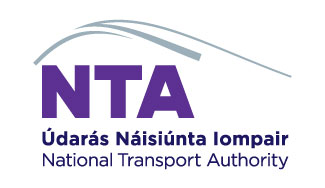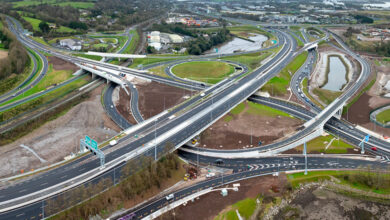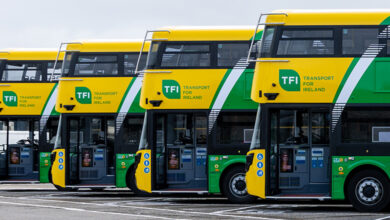Ireland’s greatest journey
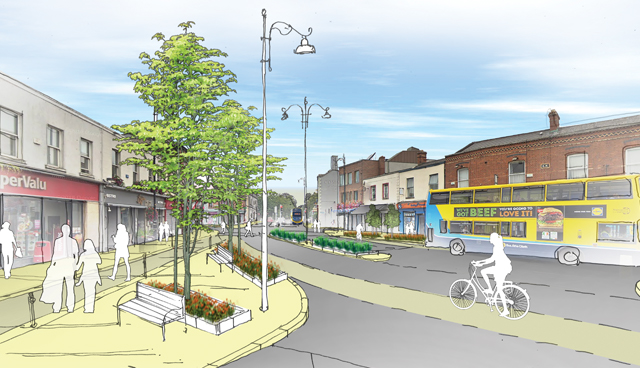
By 2040 the population of Ireland is expected to grow by over 1 million to 5.7 million people. This growth, along with growth of the economy and employment rates, will drive greater demand for sustainable transport and the National Transport Authority (NTA) is currently working on a number of major investment projects, so that we will be well placed to meet that demand.
This year is proving to be a very challenging one and there is no doubt that the way we work and the way we move around is likely to look very different in December compared to January and February. Nevertheless, taking a lead from the GDA Transport Strategy, the National Development Plan, and the Climate Action Plan, the NTA will continue to look forward and to plan for the future transport needs of communities around the country with projects like BusConnects, Luas Expansion, DART+ and MetroLink.
BusConnects
BusConnects is a major investment programme to improve public transport. It aims to overhaul the current bus system in our major cities through a 10-year programme of integrated actions to deliver a more efficient, reliable, and better bus system for more people.
This will be achieved by:
• Building a network of new bus corridors to make journeys faster and more reliable;
• New network of cycle lanes/tracks;
• Redesign of the bus network to provide a more efficient network;
• Development of a state-of-the-art ticketing system;
• Implementation of a cashless payment system;
• Simpler fare structure;
• New bus stops and shelters with better signage and information;
• Provision of bus-based Park and Ride sites in key locations;
• New bus livery providing a common style across different operators; and
• Transitioning to a new bus fleet with low emission vehicle technologies.
BusConnects also includes proposed changes to fares and ticketing systems. The second biggest source of bus delays, after traffic congestion, is the payment process at bus stops. Payment of fares by cash is still commonplace, slowing down the boarding time. Even when using the Leap Card, the complexity of payment stages means a high percentage of passengers have to interact with the driver, with resultant delays at bus stops. At busy bus stops these delays can be for several minutes. Multiply by the number of busy stops on a route, and those delays accumulate to add significantly to the overall journey time.
Under BusConnects we will simplify and streamline the process of paying for bus journeys. We want to make the fare system simpler, and we also want to make movement between different bus services seamless and easy, without financial penalty. This will require a move to a single “flat fare” approach in order to reduce the need to interact with the driver for fare payments.
As part of this process, cashless operation will be introduced on all buses, to remove the delays caused by cash payments. Currently over 70 per cent of fare payments are made by Leap card. As this increases, the transition to a cashless regime will become easier. BusConnects will incorporate the latest developments in account-based ticketing technology, potentially allowing use of credit/debit cards or mobile devices as a convenient means of payment.
The NTA released the first Public Consultation Report for the initial network proposal in July 2018 and carried out a three-month public consultation through online and paper surveys, 33 public information sessions, and email/hard copy letter submission opportunities. Nearly 60 per cent of survey respondents said that the original proposed network would be “worse” or “much worse” for Dublin than the existing service.
The goal of the proposed network is to make public transport useful to more people to reach more destinations all over Dublin and to improve upon the first draft of the network. The overall region is divided into 29 local areas, organised by ‘spines’ that connect the routes to one another.
A third consultation took place this spring, closing on 17 April 2020 in the midst of the coronavirus pandemic. The NTA has decided that there will be a further public consultation regarding the Core Bus Corridor Projects later this year.
A final round of public consultation will take place later this year.
Luas expansion
On 28 July 2020, a public consultation for the extension of the Luas to Finglas was launched by our partners Transport Infrastructure Ireland (TII).
Luas Finglas is the extension of the Luas Green Line from Broombridge to Charlestown via Finglas. It will add four new stops to the line and create a key public transport connection between the communities of Charlestown, Finglas Village, Finglas West, St Helena’s and Tolka Valley and the city centre.
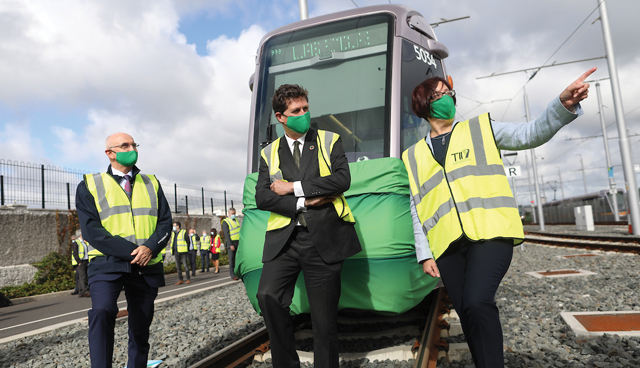
NTA and TII have developed an emerging preferred route for Luas Finglas and are inviting comments from all stakeholders and members of the public on the proposed route.
Luas Finglas will be constructed mostly in grass track, an attractive innovation in Ireland, while a cycle and pedestrian path will be constructed along much of the line, providing family-friendly, sustainable, convenient access between northside communities and the city centre.
The emerging preferred route for the proposed extension is approximately 4km long, includes four new stops, a cycle and pedestrian path along much of the route, a park and ride facility at Charlestown and an extension to the tram storage area at the Broombridge Depot. The route will provide interchange opportunities with bus and rail networks at most of the new stops it serves.
Luas Finglas will introduce transport interchange opportunities along the route. The park and ride facility at Charlestown will allow people to switch from their cars onto the Luas network. Passengers can then change to the Maynooth and Docklands rail services, including the future DART services, at Broombridge where the railway station and Luas stops are co-located. Luas Finglas is complementary to BusConnects and switching to the bus network will be easy at Luas stops and in the city centre.
Luas Finglas aligns with several objectives of Project Ireland 2040, the Government’s overarching plan for the state. It enables compact growth, sustainable mobility, access to services like education and healthcare, and crucially, a transition to a low carbon society.
In addition to extending the Luas lines, 26 existing trams were lengthened to 55m, adding 30 per cent capacity to each tram, and eight new 55m trams were delivered in July.
DART+ programme
Details of the DART+ plan were recently announced outlining in broad terms the scope and breadth of the project. DART+ is a transformative railway project which will modernise and improve the existing rail network stemming from Dublin City Centre. It will provide a sustainable, electrified, faster, reliable, and user-friendly rail system which increases train frequencies and customer carrying capacity.
It will create a full metropolitan area DART network for Dublin, with all of the lines linked and connected. This will transform the rail system in the Greater Dublin Area (GDA), delivering new DART services between the City Centre and Drogheda, Maynooth – M3 Parkway and Hazelhatch – Celbridge. DART Expansion will enable an increase in capacity network-wide from the regions to the GDA.
Customer capacity and train service frequency on these lines will be significantly increased as a result of the programme. This will help to deliver a more efficient transport system, allowing more people to make sustainable travel choices that reduce their carbon footprint and prevent chronic road congestion helping to meet the goals set out in the State’s Climate Action Plan.
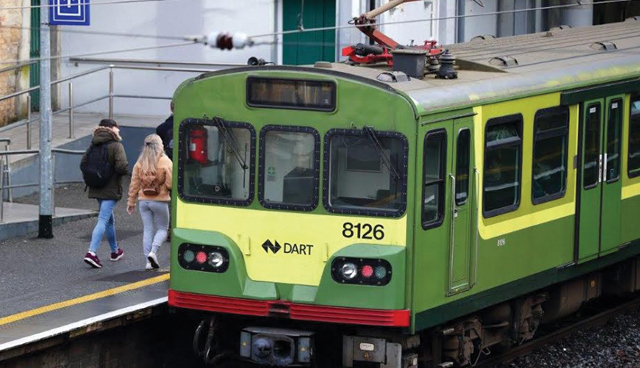
The cumulative network effect of DART+ subject to Government authorisation and funding, will increase customer capacity from circa 26,000 customers per hour per direction (2019) to circa 50,000-60,000 (peak) passengers per hour per direction under the National Development Plan investment, with future growth capacity potential of 80,000 passengers per hour per direction, subject to further fleet procurement.
One of the major elements of DART+ is DART Maynooth. This includes electrification of the Maynooth Line from City Centre to Maynooth (approximately 40km), city centre enhancements at Connolly (platforms, junctions, and station modifications) to increase train numbers per hour, relocation of Docklands Station to a location adjacent to Spencer Dock Luas Stop to better serve all routes entering the city centre, provision of new grade separate pedestrian, cycle crossing and vehicle crossings where required (subject to assessment), development of an interchange station with MetroLink at Glasnevin serving both the Maynooth Line and Kildare Line, and construction of a new DART depot facility west of Maynooth for the maintenance and stabling of trains.
In the coming weeks, a non-statutory public consultation on the plans will begin. A detailed plan for DART Maynooth will be published and feedback will be sought from members of the public, providing an opportunity opportunity to highlight the benefits of the plan to all communities along the line, and also an opportunity to identify where local concerns may arise, such as around proposed solutions for level crossings.
The objective of DART+ is to offer customers a real quality alternative to private car transport, as part of wider plans to build sustainable transport across a range of modes. DART+ will offer increased train capacity and increased train frequencies. DART+ will offer a rail system which can operate at a frequency that meets projected customer demands. This will allow passengers to access the rail network at suitable locations along the network and be transported into the heart of the city centre for all trip purposes.
Expanding the choice of public transport options is supported at national, regional, and local level, through various frameworks, policies, and guidelines. The delivery of DART+ is a central element to achieving a sustainable alignment between transport planning and proper long-term land-use development. Project Ireland 2040 and the associated National Development Plan 2018-2027 commit to investment in key sustainable transport projects, including DART+ , with the aim of reducing road congestion and greenhouse gas emissions, transitioning to a low carbon economy and concentrating land-use development along public transport corridors.
MetroLink
TII is currently progressing MetroLink, the proposed high-capacity, high-frequency rail line running from Swords in Fingal, to the South City. MetroLink will link Dublin Airport, Irish Rail, DART, Dublin Bus, and Luas services, creating fully integrated public transport in the Greater Dublin Area.
As well as linking major transport hubs, MetroLink will connect key destinations including Ballymun, the Mater Hospital, the Rotunda Hospital, Dublin City University and Trinity College Dublin. Much of the 19km route will run underground, an exciting innovation for Irish public transport.

Fingal is the fastest growing region in Ireland. Its population increased by 8 per cent between Census 2011 and Census 2016, more than twice that of the State overall. According to the 2016 Census, Fingal is the top county from which workers flow into Dublin city. Nearly 8,000 of the 20,000 workers in Swords commute to work there. Cars are used for 72 per cent of all trips in this sector and public transport’s share of trips is only 12 per cent, mostly concentrated on the coastal DART line.
Dublin Airport, as Ireland’s main international gateway, handled a record-breaking 31.5 million passengers in 2018. Dublin Airport supports 117,300 jobs in the Irish economy, and 19,200 of these are employed directly at the airport and its environs. Yet there is no rail connection to get either passengers or employees to our biggest transport hub. The proposed new alignment creates integration and connectivity between other transport hubs, such as Dublin Airport, Iarnród Éireann and DART.
MetroLink will carry up to 50 million passengers annually, cutting journey times from Swords to the city centre to 25 minutes. It will change the way we travel — and how we live.
In 2019, the NTA and TII published the Emerging Preferred Route for MetroLink in line with the Transport Strategy for the Greater Dublin Area 2016-2035.
The proposed approach to delivering the overall metro system will be delivered in three stages:
• First stage: would comprise the development of the section from Swords to Charlemont, without connecting to the Green Line but continuing the required tunnel boring works to allow the future connection to the existing Luas line;
• Second stage: incremental improvements to the Green Line to increase its capacity up to 30 trams per hour (55 metres long); and
• Third stage: connection made from MetroLink tunnel termination point onto the Green Line.
An application for a Railway Order is due to go to An Bord Pleanála early next year.
Summary
The NTA is actively investing in and planning for a sustainable, accessible public transport network throughout Ireland. Despite the current challenges the country is facing, projects are moving forward in their respective stages in order to bring public transport goals to fruition, whether it is through public consultations, involvement with local authorities, or joint efforts with Transport Infrastructure Ireland and other statutory bodies.
Whether it is increasing rail capacity, achieving climate change targets, promoting increased use of public transport, or supporting a growing population and economy, the National Transport Authority is focussed on delivering a sustainable public transport system for all.
National Transport Authority
Web: www.nationaltransport.ie
Email: info@nationaltransport.ie
Twitter: @TFIUpdates
